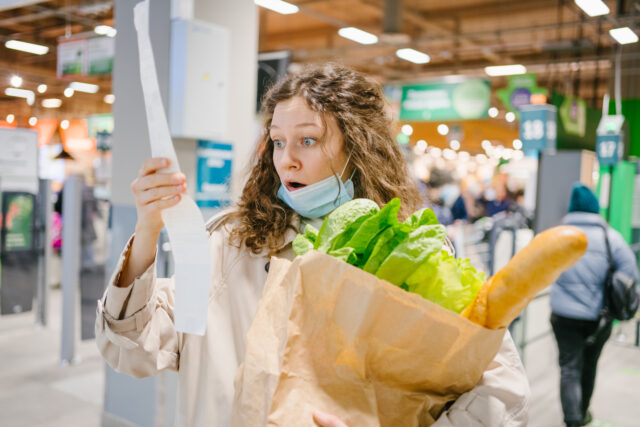The U.S. consumer pulled back on purchases in September as prices on a wide array of goods and services rose rapidly and interest rates were yanked up by the Federal Reserve.
Retail and restaurant spending was flat for the month, falling short of analyst forecasts for a rise of 0.3 percent, data from the Commerce Department showed Friday. Yet prices on many categories of consumer goods were rising in the month, implying that real sales were down.
Excluding restaurants and bars, retail spending fell 0.1 percent. Compared with a year ago, retail spending is up 7.8 percent.
The prior month’s spending was revised up from a 0.3 percent gain to 0.4 percent. Compared with a year ago, consumer spending is up 8.2 percent. That is short of the 9.5 percent gain in the price of goods recording the Consumer Price Index released on Thursday. Apart from restaurants and bars, the Commerce Department’s consumer spending data is mostly comprised of spending on goods. An index that excludes shelter—which is not included in consumer spending—showed prices rising nine percent.
Spending on motor vehicles and parts fell 0.4 percent even while prices of new vehicles rose 0.7 percent and used car prices fell 1.1 percent. Combined, the price of new and used motor vehicles fell 0.4 percent. Parts prices rose by 0.8 percent. This suggests that real unit sales were down.
Excluding motor vehicles, consumer spending rose 0.1 percent. That was more than expected. Analysts had forecast a decline of 0.1 percent.
Spending at restaurants and bars rose 0.5 percent, making it one of the strongest sectors of retail sales in the month. Prices, however, rose 0.9 percent, according to the Consumer Price Index (CPI), implying that after adjusting for inflation, sales were down. Compared with year ago, spending is up 11.5 percent, beating the inflation rate of 8.5 percent.
Sales at grocery stores rose 0.4 percent for the month and are up 6.8 percent compared with a year ago. Prices, however, were up 0.8 percent for the month and 13.0 percent over the past year. The CPI and consumer spending figures are not directly comparable because consumers buy food at places not categorized as grocery stores because they sell a wider range of merchandise.
Sales were also strong at healthcare and personal care stores. These rose 0.5 percent in September and are up 4.3 percent from a year ago. Personal care products prices were up 1.4 percent in the month and are up 6.5 percent from a year ago. Prescription and nonprescription drug prices were down 0.2 percent in the month and up 3.5 percent year-over-year.
Nonstore retail sales—mostly online sales—rose 0.5 percent as well. These are up 11.6 percent for the year.
Department store sales were up 1.3 percent for the month and 1.8 percent from a year ago. General merchandise store sales—a category that includes Walmart and Costco as well as department stores—rose 0.7 percent. Compared with a year ago, sales are up 3.7 percent.
Gas station sales fell 1.4 percent, largely reflecting the recent decline in the price of gasoline. Compared with a year ago, spending at gas stations is up 20.6 percent.
Clothing store sales rose 0.5 percent. They are up 3.1 percent over the past 12 months. Prices of apparel fell 0.3 percent in the month and they are up 5.5 percent for the month. Similar to groceries, the CPI covers a wider range of apparel sales than just sales at clothing stores.
Sales at furniture stores fell 0.7 percent. Prices were down 0.1 percent. Compared with a year ago, sales are up 0.9 percent while prices are up 10.1 percent. The recent decline likely reflects weakness in the housing market.
Electronics and appliance store sales dropped 0.8 percent and are down 8.6 percent compared with a year ago, the only category of retailers with a year-over-year decline. These was a category that saw huge gains during the pandemic but is now in retreat. Prices of appliances fell 0.3 percent in September and are up 1.3 percent compared with a year ago.
Sales at stores selling building and gardening materials—including national brands like Lowes and Home Depot—fell 0.4 percent in the month. Compared with a year ago, however, spending is up 9.7 percent. Prices of tools and outdoor equipment were up 1.2 percent in September and are up 12.5 percent compared with the prior September.

COMMENTS
Please let us know if you're having issues with commenting.